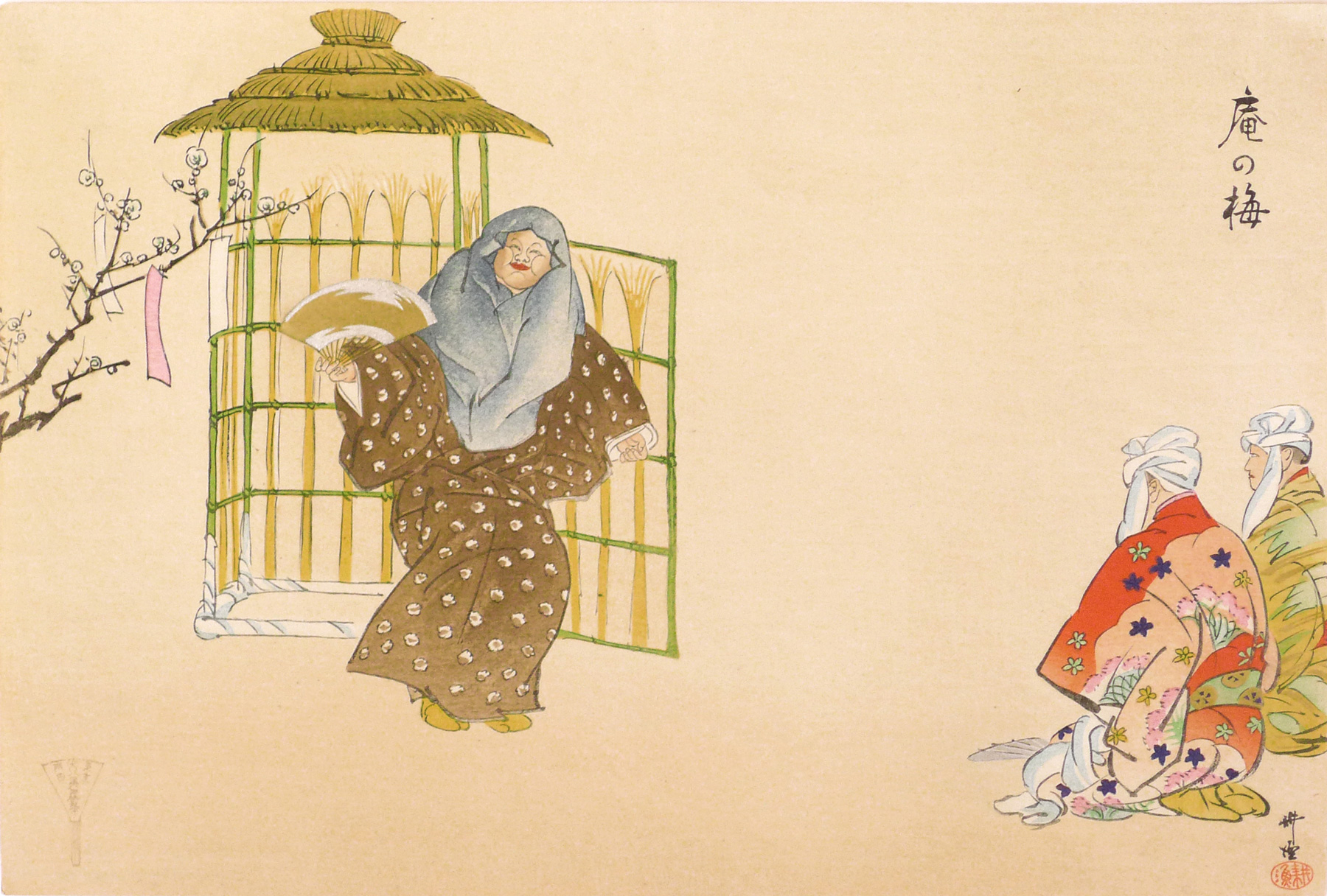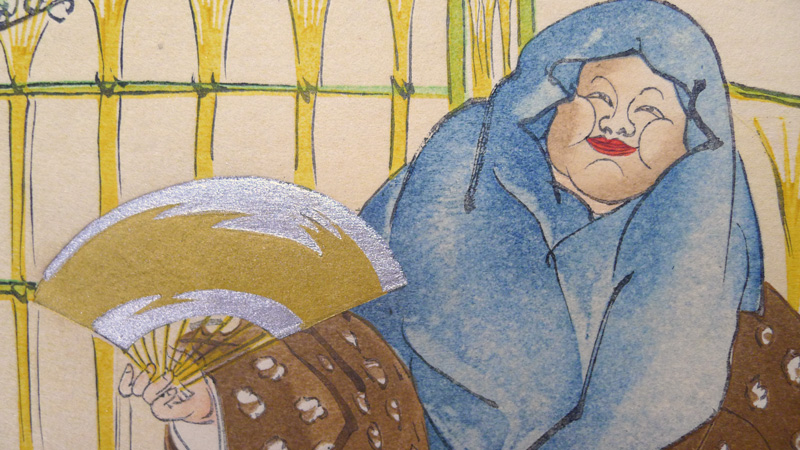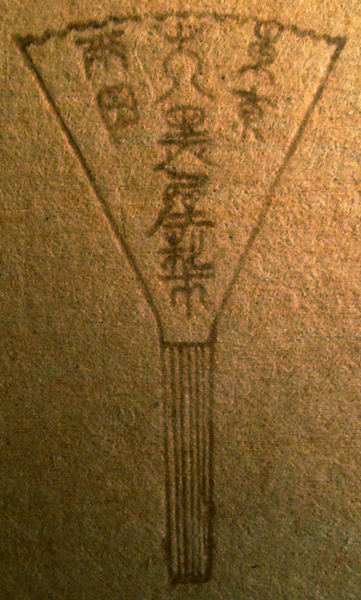About This Print
One of sixteen prints designed by Tsukioka Kōgyo (1869-1927) for the series Kyōgen Gojūban (Fifty Kyogen Plays) before his death. The series was completed by his daughter Tsukioka Gyokusei (1908-1994). In this scene the shite, an aged nun, conducts a celebration during which she drinks sake and is then asked by her women visitors to dance for them. Poems that the women have brought can be seen hanging in the branches of the plum tree.
For information on the series Kyōgen Gojūban, see the section Final Series of Prints (1927) - Kyōgen gojūban (Fifty Kyōgen Plays) under the artist Tsukioka Kōgyo (1869-1927).
For information on the series Kyōgen Gojūban, see the section Final Series of Prints (1927) - Kyōgen gojūban (Fifty Kyōgen Plays) under the artist Tsukioka Kōgyo (1869-1927).
The Play - Iori no ume
Source: A Guide to Kyogen, Don Kenny, Hinoki Shoten, 1968, p.105-106.
It is early spring and a group of young women come singing to the hermitage of an aged Nun to view the plum blossoms. The hermitage is a hut made of live plum trees famous for their blossoms.
The Nun apologizes because the trees are the same age she is so that the blossoms are not as plentiful and beautiful as they used to be.
The Women offer the Nun sake. They all begin drinking, singing and dancing together. They finally convince the Nun to dance for them. Before she dances, she instructs them all to take branches of the blossoms as souvenirs, but says they must pick them themselves, for her arms are too old and weak to reach that high. The Women sing the accompaniment for the Nun's dance.
In the Ōkura script, the Nun is singing when the Women arrive and is embarrassed that they hear her. She has been expecting them because they come every spring at plum blossom time, so she is happy to see them. They have brought poem cards which they present to the Nun to read, then each one hangs her own on the branches of the tree. The party begins, and the rest of the play is the same as the [above] Izumi script."
latest revision:
It is early spring and a group of young women come singing to the hermitage of an aged Nun to view the plum blossoms. The hermitage is a hut made of live plum trees famous for their blossoms.
The Nun apologizes because the trees are the same age she is so that the blossoms are not as plentiful and beautiful as they used to be.
The Women offer the Nun sake. They all begin drinking, singing and dancing together. They finally convince the Nun to dance for them. Before she dances, she instructs them all to take branches of the blossoms as souvenirs, but says they must pick them themselves, for her arms are too old and weak to reach that high. The Women sing the accompaniment for the Nun's dance.
In the Ōkura script, the Nun is singing when the Women arrive and is embarrassed that they hear her. She has been expecting them because they come every spring at plum blossom time, so she is happy to see them. They have brought poem cards which they present to the Nun to read, then each one hangs her own on the branches of the tree. The party begins, and the rest of the play is the same as the [above] Izumi script."
Print Details
| IHL Catalog | #624 |
| Title | Iori no ume 庵の梅 (The Plum Blossom Hut) |
| Series | Kyōgen Gojūban 狂言五十番 (Fifty Kyogen Plays) |
| Artist | Tsukioka Kôgyo (1869-1927) |
| Signature | Kōgyo 耕漁 |
| Seal |  Kōgyo seal Kōgyo seal |
| Date | 1925 or 1926 |
| Edition | unknown |
| Publisher | Matsuki Heikichi (Daikokuya)松木平吉 (大黒屋) and fan-shaped seal reading published by Daikokuya, Tokyo, Ryōgoku 東京両国 大黒屋 発行 [Marks: pub. ref. 029; seal not shown] click on image to enlarge |
| Carver | |
| Impression | excellent |
| Colors | excellent |
| Condition | excellent |
| Genre | ukiyo-e |
| Miscellaneous | |
| Format | oban yoko-e |
| H x W Paper | 10 x 15 in. (25.4 x 38.1 cm) |
| Collections This Print | Art Institute of Chicago 1943.832.9; University of Pittsburgh (as part of a bound volume of the entire series Kyōgen gojūban) 20101012-kogyo-0040 |
| Reference Literature |
8/2/2021




